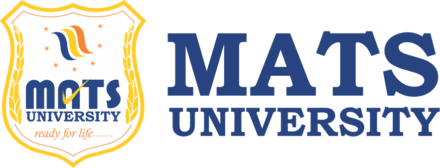Infrastructure Policy
February 25, 2022 2022-02-25 9:19Infrastructure Policy
Infrastructure Policy
MATS University prides itself with NAAC accreditation and all the necessary approvals for its international community of students and the faculty providing an exciting, colorful campus life for everyone. Students from various states are represented in the student body. MATS University offers multiple undergraduate programmes across 14 faculties, covering multidisciplinary areas of study. We aim to provide students with a broad-based education across different disciplines with a global perspective, in order to develop students’ intellectual and personal strengths. We expect the best out of our students, through excellence in learning and teaching, thus seeking to develop graduates of international distinction. Students have the chance to learn under the expert guidance of from faculty from IIT, IIM, IIIT, NIT and Nationally ranked institutions of excellence (leading academics), and by studying at a research-oriented university they learn research techniques from undergraduate level. With our programmes, students are able to develop skills and knowledge relevant to present-day issues. They develop problem-solving skills and the ability to innovate—skills that are invaluable for further study, employment and be world ready.
- The economy of India is continuing to be the fastest growing major economy and one of the top 3 largest purchasing power in the world.
- India is a federal republic governed under a parliamentary system and consists of 29 states and 7 union territories.
- A pluralistic, multilingual and multi-ethnic society, it is the 7th largest country in the world and the largest democracy.
- India is the 2nd largest English speaking country in the world as well as the 2nd largest combined group of Engineers and Scientists is from India.
As of 2020, there are more than 14 billion mobile devices in use worldwide, a number that’s expected to grow to nearly 17 billion by 2023.
Further, more than half of all web traffic is mobile–which means that the likelihood that students, parents, faculty, and staff will need to use the LMS on a mobile device is relatively high. To optimize their experience, adopt a mobile-first design approach. Rather than building a full, standard website and then cutting features or scaling back functionality for a mobile version, start by focusing solely on how your LMS looks and works on mobile.
Ask yourself, what are the core tasks teachers, students, parents, administrators need to perform? What information and tasks need to be accessible at all times? How does information look on small screens? How do you interact with information?
It’s always easier to layer complexity for a desktop experience, but designing for mobile-first ensures a seamless experience for users—wherever they are.
4. Design curriculum and instruction with the strengths of your specific LMS in mind
Every platform is different and no single approach to LMS creation is perfect. Some work well as assessment software while others handle video better. Some or visual while others load quickly, are text-based, and use frequent lesson and page loading to move the student through material.
Whatever your approach, design what and how the students learn in cooperation with the strengths and abilities of the LMS rather than designing digital lessons and units and then shoe-horning them into whatever the LMS is able to do.
While the options for customization can be exciting, taking the time to consider these four things will help you build the system that meets your needs so that you can focus on the thing that matters most—providing a great education to students.



